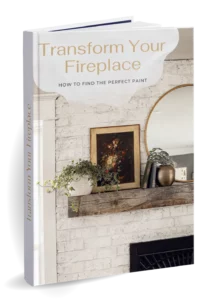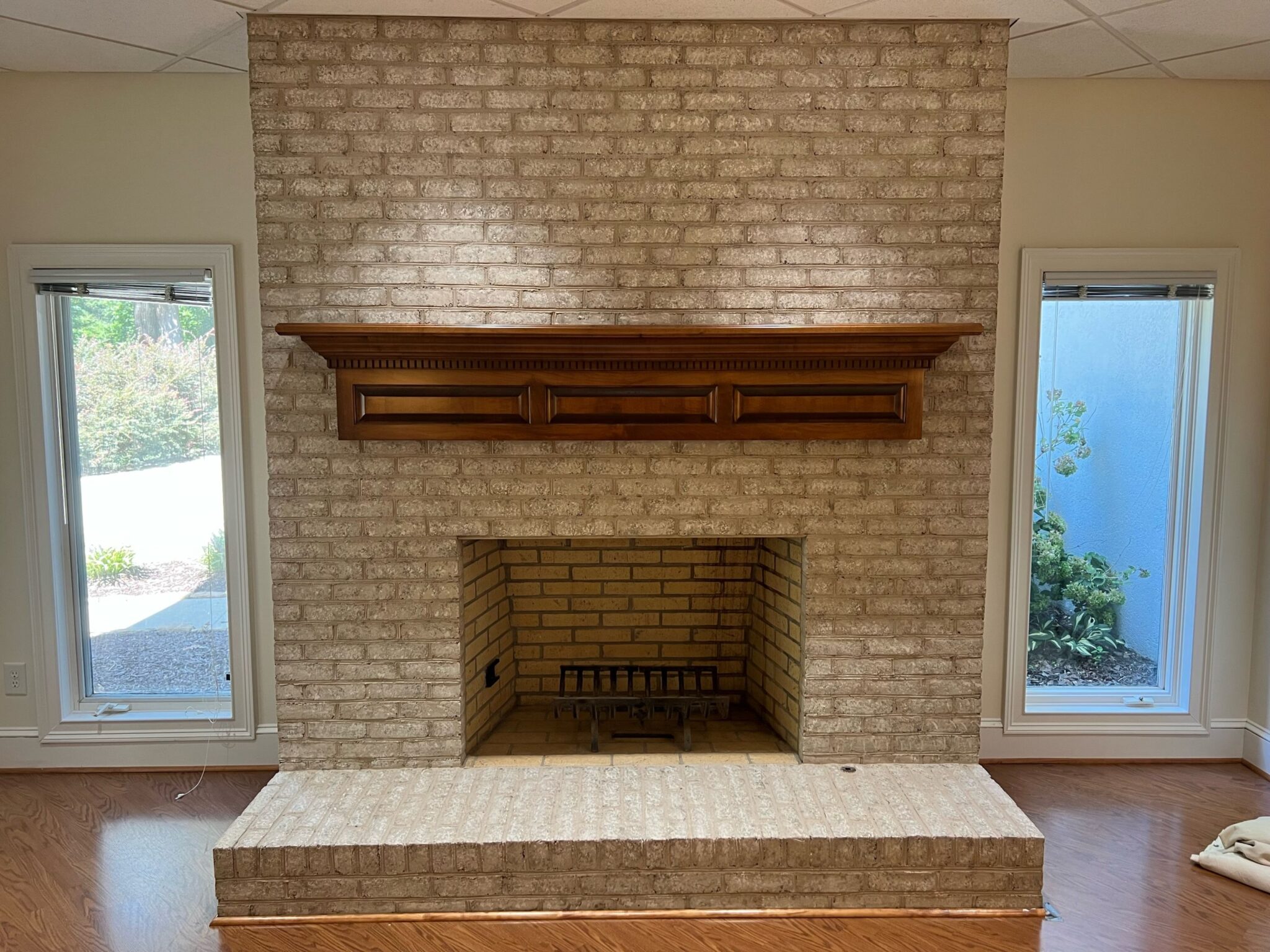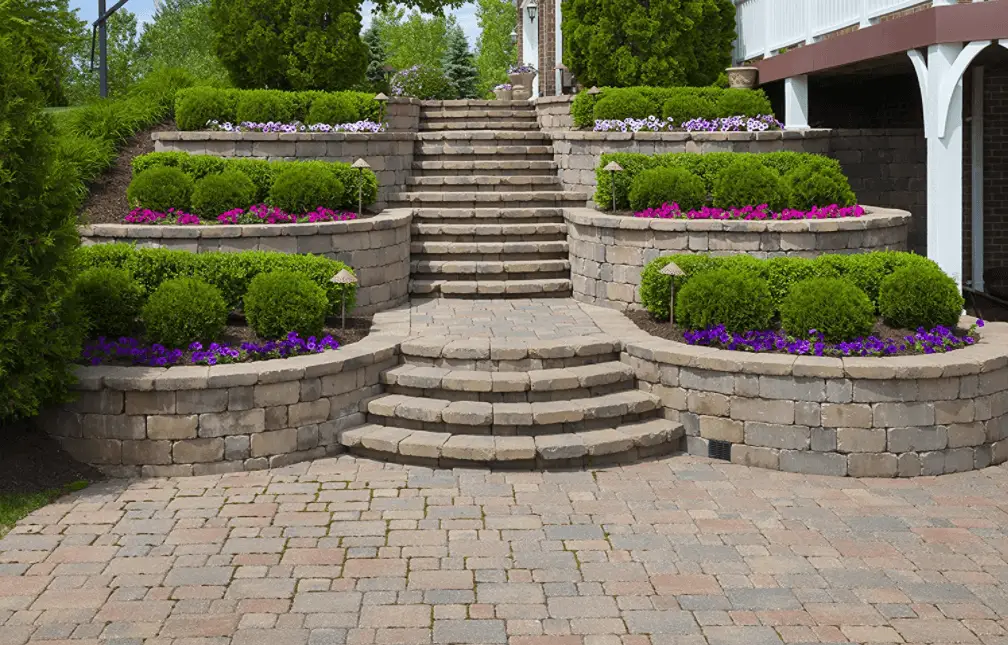Before we begin, I want to specify that this article is about interior lime paint for walls and ceilings. If you’re looking for limewash for exterior masonry, you can read about my experience testing Romabio here. If you need a basic introduction to the differences between lime wash and lime paint, you can start here.
Now that we’re on the same page, let’s get started.
Kerry Pieri from Harper’s Bazaar
Page Contents
While a movement toward using clean, nontoxic products in everything from skincare to cleaning goods is consistently gaining momentum…the unique look of the paint technique is what initially drew…devotees in.
From Common Use to Little-Known Luxury
Currently, we can date the use of limewash back to the Roman empire in 100BC. Slaked lime was mixed with mineral pigments, water, and other additives that helped stabilize the paint and extend the working time. For a traditional lime paint, the additive would be salt, but sometimes milk caseins were added–the beginnings of milk paint, which would be popularized later.
Lime paint was valued for preserving the structures it was applied to. It allows porous surfaces like stucco and wood to breathe naturally, and it has antifungal properties. However, it’s porous nature means that it is almost impossible to clean: it will simply absorb any cleaner applied to it.
Fast forward to colonial America where the use of lead paint is widespread, and you see a change in the characteristics of paint. While a new coat of lime paint would be applied every several years to cover stains and refresh the color, lead paints would remain clean and vibrant for up to 20 years. There is a shift in popularity from lime and milk paints, which wear down over time, to stronger coatings.
When lead paints were shown to be the cause of Painter’s Disease–originally known as a strange set of symptoms that accosted and often killed otherwise healthy young painters, now known as lead poisoning–latex paints rose in popularity. This rise started in the 1950’s along with a wave of homeowners switching from contractor work to DIY projects.
Latex paints are a blend of water, a resin, a solvent (to keep the resin dissolved in the water), pigments, and other additives to improve the qualities of the paint. They are easy for an inexperienced homeowner to apply, durable enough to last, but not so durable that repainting in a new color every so often seems unreasonable.
Unfortunately, latex paints contain VOCs, which, according to EcoHome, “are added by manufacturers partly to slow drying times, but predominantly to prevent paint from freezing during transportation.” They add, “We grew to accept VOCs in our paints and not a lot of thought was put into why, or if they were actually necessary.”
VOCs added to the paint during the manufacturing process will dissipate into the atmosphere in a process called off-gassing. While you may think off-gassing only occurs during the first few days after the paint has dried, Green Seal estimates that “less than 50% of the VOCs in latex paint (applied to a surface) are emitted in the first year.”
So for multiple years after painting, you’ll be breathing in those VOCs. Even paints labeled low VOC or no VOCs are suspect. A low VOC paint can have as little as 25% fewer VOCs than a regular paint, and a no VOC paint can still have dangerous compounds that, while not labeled VOCs, behave in the same way. Check out the full article by EcoHome for a more in-depth discussion: Choosing non-toxic paint – Ecohome
With a growing consciousness of the products we use, their effect on our health, and their effect on the environment (coupled with design trends “decidedly softer and more naturalistic” than the “years of…leaning toward the super sleek” described by Harper’s Bazaar), limewash paint interior are reentering the design scene. Most lime paint interior companies craft completely natural paints that are eco-friendly and truly VOC free. The suede texture and subtle color variation in lime paint is well suited to the shift towards soft and welcoming spaces.
Picking a Color and Perfecting Application
Most lime paints are colored with mineral pigments. This gives the colors a lot of character. An airy blue feels like clouds. An olive green brings your space the same life rushing through forests. Earthy reds ground the space and bring an atmosphere of peace.
You’ll find at least one shade of lime paint for every color in the rainbow, plus paints in off-whites, browns, and greys. Lime paint manufacturers focus on creating a limited number of truly beautiful shades, each shade containing a symphony of color. I think this makes finding a paint color easier than if I went to a Home Depot to see thousands of color cards, one hardly distinguishable from another.
Lime paint colors can also be layered to create unique looks. Bauwerk recommends starting with a couple coats of a dark color before using one coat of a white shade. This creates a white look with lots of texture and depth!
All lime paints have essentially two pigments: one mineral pigment and the lime itself, which is white when it dries. These two different types of pigments are what create the natural color variation and movement in the finished patina. Because of this two-pigment formulation, lime paint needs to be applied differently than a latex paint.
Lime paint also needs to be brush-applied with a large block brush. It cannot be rolled or sprayed on. I’ve included some videos here so you can watch the application process, but there are just three basic parts to the technique:
- Paint with X brushstrokes. This creates natural movement and clouds of color. Paint in straight lines, and that’s how the pigmentation will show up: linear. It will look like you painted with badly mixed paint.
- Don’t go back over an area you’ve already painted. Once you’ve put the paint down, just let it be. Lime paints are thinner than latex paints; as soon as the paint hits the wall, it begins to absorb and dry. Going back over it can result in smudging and ruining the natural dispersion of the pigmentation.
- Don’t let the free edge of the paint dry. Work rapidly to cover the whole wall before the edges of your paint dry out. This can cause harsh lines to show in the final patina. If the wall you’re working on is too large to paint entirely without letting an edge dry, feather the edge out.
Before we close the application section, there is one other common issue that needs to be addressed: primer. Most surfaces will need to be prepped with a mineral-based primer before applying the lime paint. This is especially true for previously painted surfaces. Since lime paint isn’t resin-based like chalk, acrylic, latex, and other types of paint, it only adheres well to specific surfaces.
Most lime paint brands sell a primer specifically designed for their lime paint formulation. You cannot substitute a traditional primer. If you’ve been reading up on lime paint, you’ve probably seen this blog post, which describes a bad experience with lime paint. The primer is what ensures you won’t have the same issues.
Lime Paint Brands and How to Choose One
When I first started looking into lime based wall paints, I thought there were only a couple brands to choose from. With a little more in-depth research, I was able to find a ton of different brands with unique color selections, selling points, and service locations.
I think it’s important to note, however, that all of these brands sell quality products. I haven’t seen any negative stories about a specific brand. While I haven’t used all of these brands myself, all my research indicates that you can’t really go wrong when choosing a supplier for your lime paint.
Find a brand that services your area with colors you love. It can also be good to consider whether the brand sells the applicator tools you’ll need and any other products the brand sells.
Bauwerk Colour
Bauwerk Colour was founded in Australia in 2000 and now ships their products worldwide. Their range of products includes interior and exterior lime paint, primers, garden pot paint, brushes, and a concrete sealer.
With worldwide shipping and a huge selection of color choices, this is the brand to shop with if you’re looking for a specific shade. Two decades of manufacturing and customers in all sorts of climates and you know this company is creating a quality product!
J.H. Wall Paints
This is a newer brand to the lime paint scene. It has a limited color selection, but all of the colors are gorgeous! I love shopping with brands like this; it makes it easier to pick a color when you have a small number of beautifully mixed colors to choose from.
All their paints are manufactured in the U.S. and tinted in small batches. They manufacture lime paint, two primers (an interior and an interior/exterior), mineral stain, a matte sealer, and a specialty brush. They also sell a slurry, which can be used to add more texture to the paint.
They offer free shipping to the U.S., and while they do ship to other countries, it may get more expensive.
Pure & Original
Pure & Original is an incredibly versatile brand. They sell a lot of different finishes from a floor paint to a specialty paint that creates a Tadelakt or concrete appearance. They also sell lime wall paint (of course), chalk paint, matte washable paint, a traditional lacquer, and a range of sealers, primers, and tools.
From beiges to deep reds and olive greens, this company has a wide range of colors to choose from. They have a U.S. store and a Canadian store so you can shop from either country.
Portola Paints and Glazes
This company was founded in 1998 by two artists. The colors they offer are simply gorgeous! Similar to J.H. Wall Paints, the color selection is limited, but each color is carefully crafted and guaranteed to be beautiful.
Portola Paints and Glazes offers a traditional line of coatings with an acrylic series, an enamel series, and an exterior series and a specialty line with limewash paint and a plaster. The specialty line also includes decorative finishes (satin, wrought iron, and copper), and they sell primers and sealers. Portola ships to Canada and the U.S.
Color Atelier
Color Atelier is a San Francisco based brand selling lime paints and plasters. They also offer supplementary products like tools, primers, and sealers. They ship their products all over the U.S. and sell on Amazon.
Their color palette is limited but contains a lot of beautiful blues and neutrals. This is the brand I’d recommend purchasing from if you want to buy on Amazon.
Vasari
Vasari sells lime paints and plasters as well as the primers, sealers, and tools needed to apply them. Vasari was founded in 2003, and is manufactured in California, and ships worldwide.
This company has a small selection of colors, but many customers choose to have custom shades made. You can also purchase their product through Amazon.
Final Thoughts
To summarize, lime paint is valued for it’s unique suede finish with subtle movement and natural color variation and it’s natural formulation, good for both the environment and your health.
You can find lime paints both in vivid hues and earthy neutrals, but, unlike latex paints where you’ll have to choose between hundreds of greys, scores of lavenders, and rows of olives, lime paint colors are more limited in selection. Each color is carefully crafted to be the best it can be so you know the color you pick will be gorgeous and have lots of character.
Lime paint needs to be applied with a large masonry brush in an X or crows-foot pattern to evenly disperse the natural pigments and hydrated lime.





